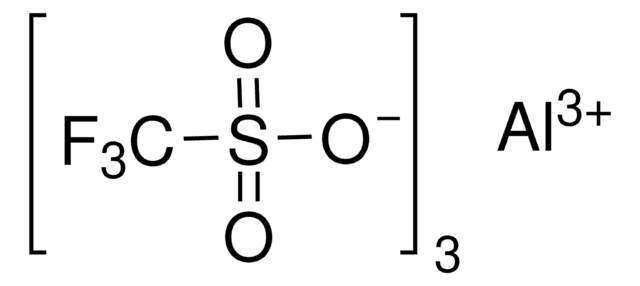587583
Zinc phosphate
99.998% trace metals basis
Sinónimos:
Pigment White 32, Trizinc diphosphate, Zinc orthophosphate
About This Item
Productos recomendados
Análisis
99.998% trace metals basis
formulario
powder and chunks
idoneidad de la reacción
reagent type: catalyst
core: zinc
impurezas
≤25.0 ppm Trace Metal Analysis
mp
900 °C (lit.)
solubilidad
H2O: insoluble(lit.)
densidad
4.0 g/mL (lit.)
cadena SMILES
[Zn++].[Zn++].[Zn++].[O-]P([O-])([O-])=O.[O-]P([O-])([O-])=O
InChI
1S/2H3O4P.3Zn/c2*1-5(2,3)4;;;/h2*(H3,1,2,3,4);;;/q;;3*+2/p-6
Clave InChI
LRXTYHSAJDENHV-UHFFFAOYSA-H
¿Está buscando productos similares? Visita Guía de comparación de productos
Categorías relacionadas
Palabra de señalización
Warning
Frases de peligro
Consejos de prudencia
Clasificaciones de peligro
Aquatic Acute 1 - Aquatic Chronic 1
Código de clase de almacenamiento
11 - Combustible Solids
Clase de riesgo para el agua (WGK)
WGK 2
Punto de inflamabilidad (°F)
Not applicable
Punto de inflamabilidad (°C)
Not applicable
Equipo de protección personal
Eyeshields, Gloves
Certificados de análisis (COA)
Busque Certificados de análisis (COA) introduciendo el número de lote del producto. Los números de lote se encuentran en la etiqueta del producto después de las palabras «Lot» o «Batch»
¿Ya tiene este producto?
Encuentre la documentación para los productos que ha comprado recientemente en la Biblioteca de documentos.
Los clientes también vieron
Artículos
Colloidal quantum dots (CQDs) are semiconducting crystals of only a few nanometers (ca. 2–12 nm) coated with ligand/surfactant molecules to help prevent agglomeration.
Nuestro equipo de científicos tiene experiencia en todas las áreas de investigación: Ciencias de la vida, Ciencia de los materiales, Síntesis química, Cromatografía, Analítica y muchas otras.
Póngase en contacto con el Servicio técnico











